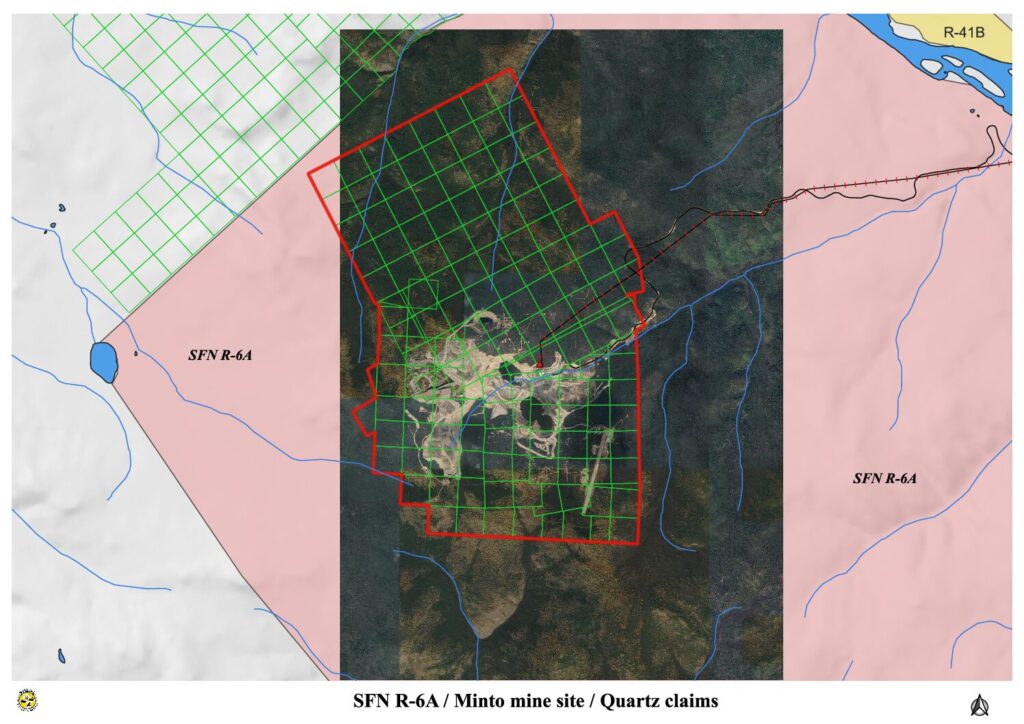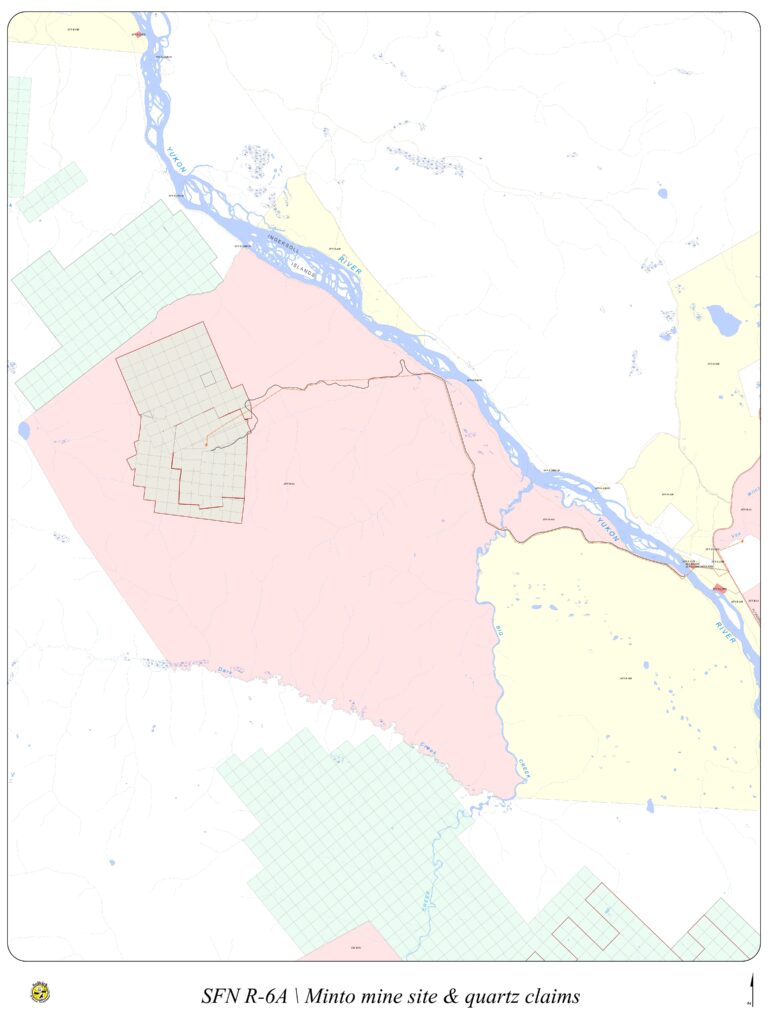We’re in the Driver’s Seat; Update on the Minto Mine Site

We’ve Reached a Milestone with the Minto Mine — and This Didn’t Happen Overnight
Selkirk First Nation has officially acquired key assets at the former Minto Mine site. If you’ve been part of the community meetings, the discussions, or the decisions over the last year, you already know why this matters. If not, we’re here to bring you up to speed.
How We Got Here
On June 13, 2025, the Yukon Supreme Court approved the final sale of assets tied to the Minto Mine site. Just five days later, on June 18, the transaction officially closed — and Selkirk First Nation became the legal owner of all remaining mine-linked assets, including mineral rights and licenses.
Selkirk First Nation’s acquisition of the Minto Mine site was completed through a two-step court-approved process.
The acquisition was completed in two stages: first, we secured the infrastructure, buildings, equipment, and vehicles tied to the site (Package A). Then, we acquired the mineral rights, licenses, and permits (Package B). Together, these make Selkirk First Nation the full legal and decision-making authority over the site.
This didn’t happen quickly or easily. It was the result of long-term strategy, community support, and our Nation’s strong commitment to self-determination.
Our gratitude goes out to the negotiation team behind this monumental event: Kevin McGinty, Director of Mineral Resources, Greg Fekete, Legal Counsel, and James Harper Legal Counsel and Lead Negotiator for Selkirk First Nation. This was a complex file to negotiate, and they did the heavy lifting that was required to make this acquisition happen. On behalf of Selkirk First Nation, we thank you all.
The Void Left Behind when Minto Metals Abandoned the Site
When Minto Metals Corporation abruptly abandoned the site in May 2023, it left behind uncertainty, debt, and the risk of permanent closure. The mine operated on our Traditional Territory, but SFN had no formal authority over operations.
While the mine was in operation – SFN had no decision-making authority over anything that happened on the site. Yet for over 15 years we continued to finance and conducted our own third-party environmental monitoring, technical analysis, and data reviews. We did this out of care and concern about the land. We stayed informed and made recommendations – even pushed for the mining company to meet environmental standards when necessary.
At last – WE, Are Now In the Driver’s Seat

This is the achievement.
For the first time, Selkirk First Nation holds full decision-making authority over the future of a mine site on our Traditional Territory — and that changes everything.
We are now leading a path forward in a way that remains close to our values.
A Vision Set in Motion by Our Past Leaders
We owe this empowered position to the vision and foresight of our past leaders and Elders — those who negotiated our Final Agreements and saw potential in this land long before this moment arrived.
They selected this land, and the land around it, with a long-term generational view in mind. They knew what it held. While the mineral rights were already owned by grandfathered claims at that time, it didn’t stop our leaders from making sure we still had a stake in its future.
Because of their foresight, we are now in a strong position to act on Chapter 22 of our Final Agreement.

We are now able to implement Chapter 22 of our Final agreement in a meaningful way, including:
• Supporting employment and training for Citizens
• Encouraging business and economic development
• Promoting self-reliance through strategic participation in resource-based industries
Thank You to Our Citizens!
We want to sincerely thank all Citizens, who participated in the community meetings, locally and those who attended virtually, which helped shape this acquisition. Your feedback, support, and engagement were a vital part of the process.
This acquisition has been years in the making, and it reflects the strength of what we can achieve when we work together, guided by our values and our long-term vision.
What’s Next?
You may be wondering what happens now.
The next step is a 18-24 month exploration program, designed to gather updated technical and environmental data. This will inform a full feasibility study to determine whether the site can be reopened safely, responsibly, and with long-term economic value.
We are in the early processes of defining what happens next — no decisions have been made yet. But the difference is, now those decisions will be ours to make.

Employment and Training
We’ve also heard your questions about employment and training. The mining sector requires specialized skills, and Selkirk First Nation will prioritize opportunities for skills development and training opportunities.
We will endeavour to fill as many roles as possible with skilled and qualified Selkirk First Nation Citizens.Whether through reclamation work, environmental monitoring, or potential mine operations, there is potential for Citizens with job-related skills to participate or acquire training at various stages.
What about Partnerships?
This is a good time to take note of a very important detail: Selkirk First Nation will not directly operate a mine. Any future mining activity would be carried out through a subsidiary company, meaning SFN is going to create an entirely new company which holds all the assets, including the claims, licences and permits. This newly formed company will be owned in majority by SFN and will partner with an experienced, industry-leading exploration/mining company that can assist us in defining the most responsible and economically sustainable path forward. This means that future partners will also become stakeholders and have a seat at the table. Which is why it is important to find partnerships that align with our values. We will share more on partnerships as developments unfold. There will also be a community meeting before July 30th to explore this very important topic in detail and answer questions.
And Last But Not Least — Let’s Talk About The Environment.
How can a First Nation be stewards of the land and still be involved in mining?
Here’s the short answer: we are now in a position to ensure that any activity on our land is guided by our values, reflects our responsibilities as land stewards, and balances environmental integrity with long-term economic sustainability.
This land matters to all of us as many of us continue to harvest from this area. Protecting its integrity for future generations is a core value. Who better to determine the future of this site than those who know it best, rely on it most, and have always cared for it?
As we move forward, we will let our Traditional Knowledge and our responsibilities as land stewards guide us in every step.

